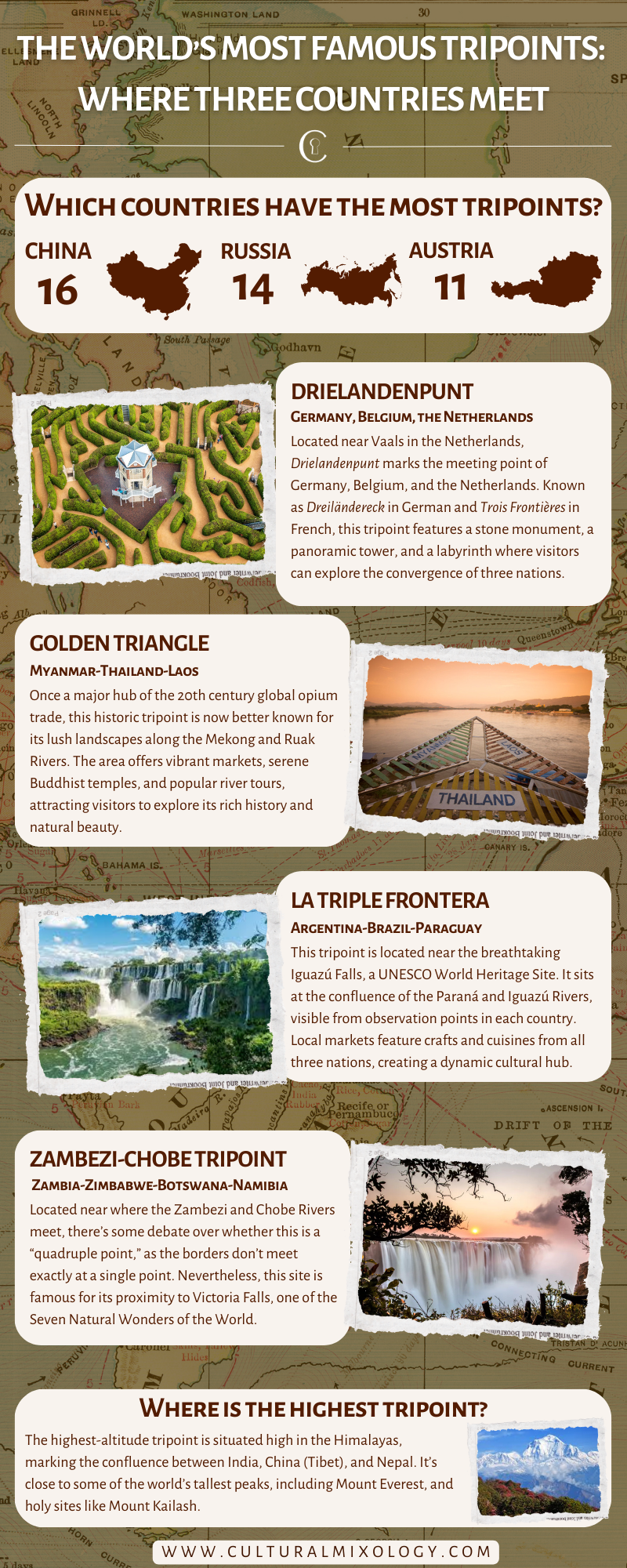When cultures meet, fascinating stories unfold. But have you ever thought about where entire countries converge? Tripoints—the places where the borders of three countries meet—offer a unique perspective on geography and international relations. Some of these sites even go beyond three countries, creating quadruple or even more complex intersections. These remarkable locations, ranging from remote mountain peaks to bustling riverfronts, are rich in history, natural beauty, and cultural significance.
Did you know there are 175 recognized tripoints around the globe? While many are off the beaten path, others stand out for their cultural, historical, or geographical significance. For example, the tripoint at the junction of Russia, China, and Mongolia marks a remote, vast landscape where nomadic traditions thrive. Similarly, the intersection of Bangladesh, India, and Myanmar offers a rich blend of cultures and natural beauty. In Southern Africa, the tripoint where South Africa, Mozambique, and Eswatini meet near Komatipoort, is a key intersection for trade and travel. Another notable location is Treriksröset, where Finland, Norway, and Sweden meet. There’s a small stone here around which visitors can walk to stand in all three countries.
These unique spots go beyond geography—they are places of connection. At locations like Dreiländereck (Germany, France, and Switzerland), border agreements allow for free movement, fostering cross-border cooperation and cultural exchange. In regions like the Triple Point of India, Bhutan, and China (Tibet), the intersection of borders plays a significant role in both geopolitical discussions and tourism.
Check out our infographic below to learn more about some of the world’s most intriguing tripoints!














